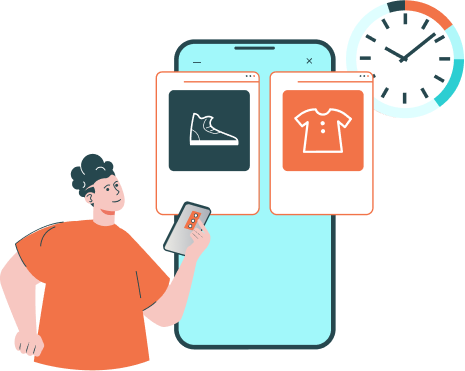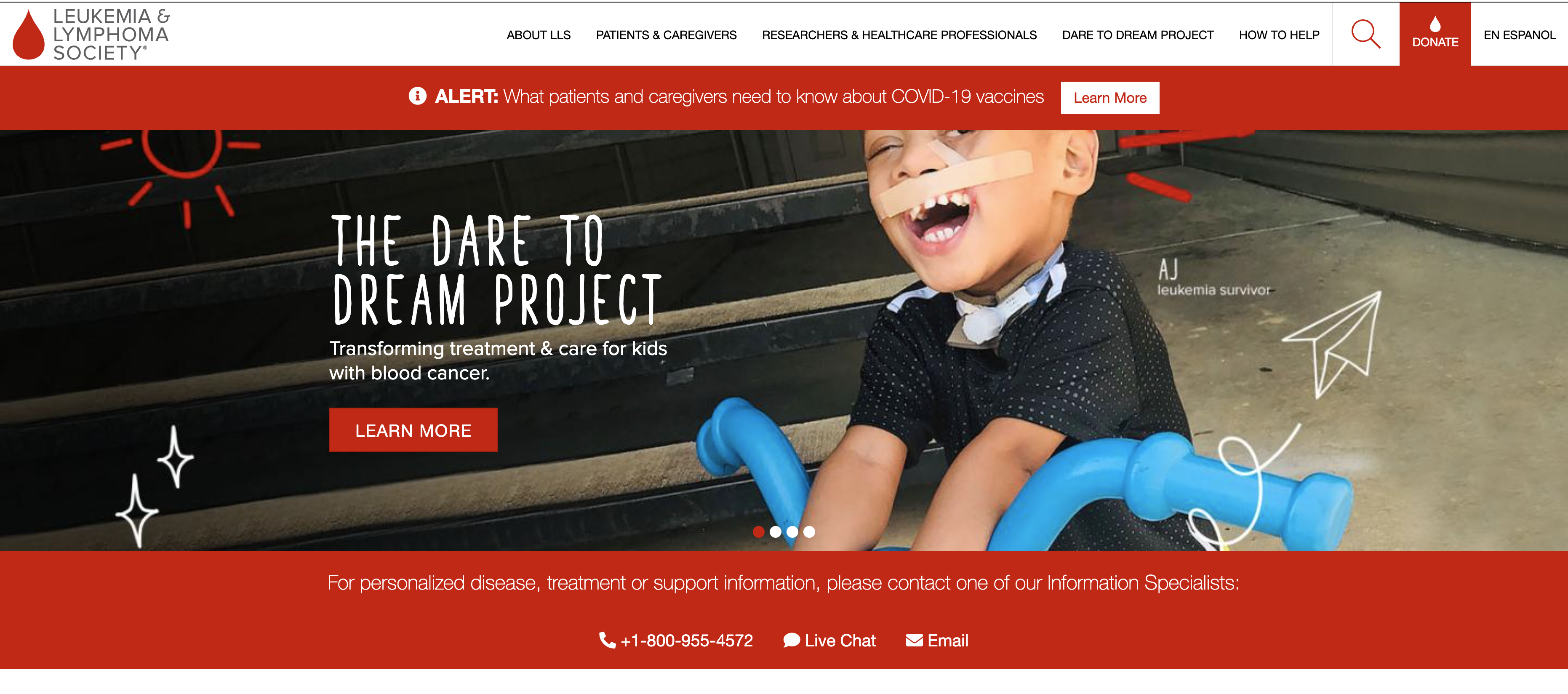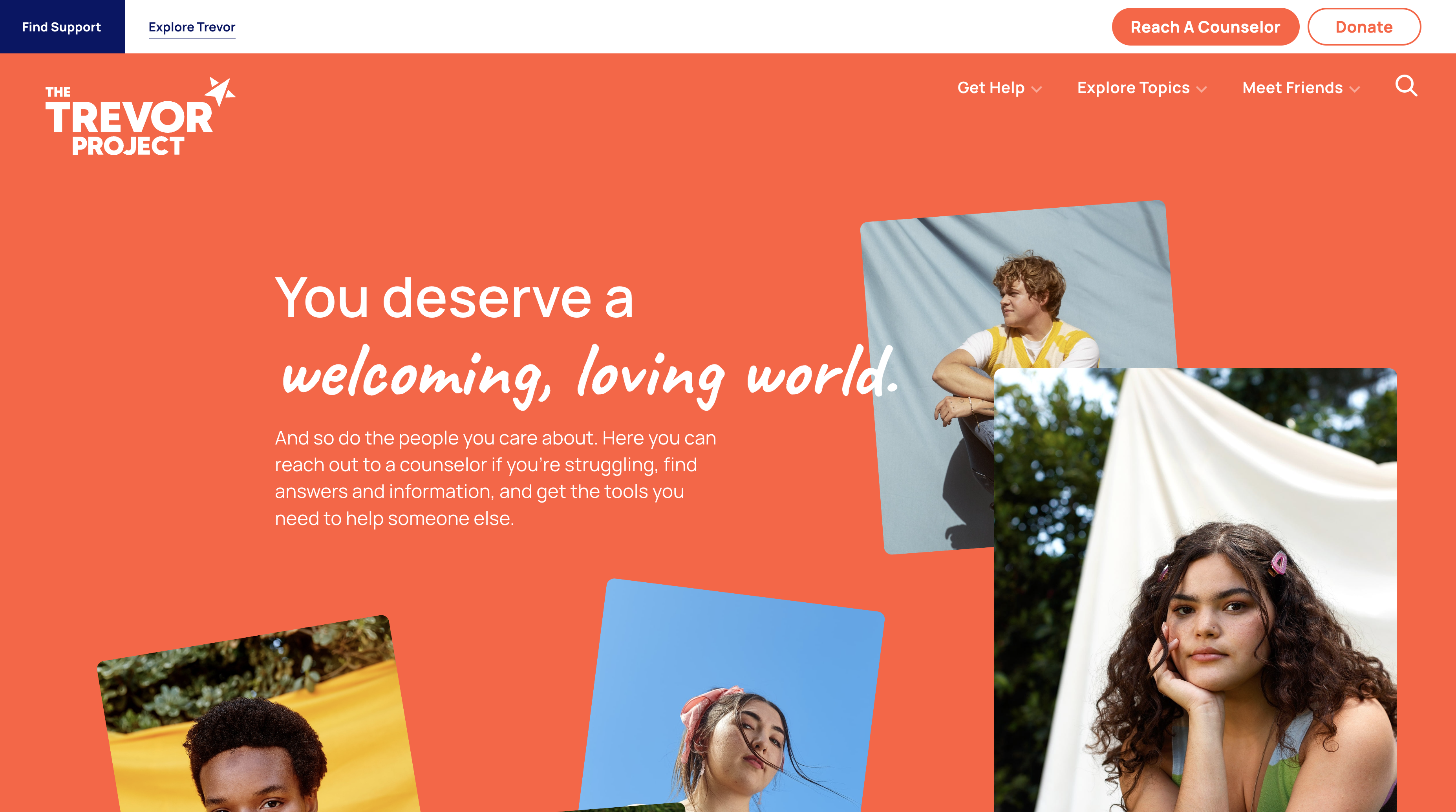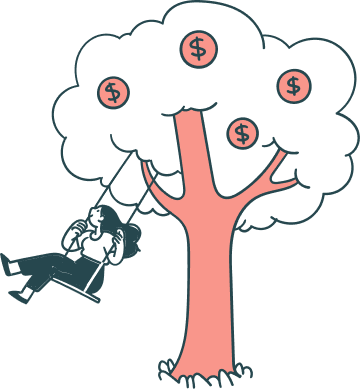Does your organization have a plan for how to raise money on #GivingTuesday? Or are you still searching for the perfect Giving Tuesday idea?
Giving Tuesday is an annual celebration where people from around the world come together to support nonprofits. In 2021 alone, people gave $2.7 billion worth of their money, time, and supplies. Because there’s excellent momentum going into Giving Tuesday 2022, you’ll want to prepare your nonprofit’s fundraising plan accordingly.
In this guide, we’ve compiled a list of our favorite Giving Tuesday resources and ideas, along with context for how to put them into action. Specifically, we’ll cover:
- 20 Effective Giving Tuesday Ideas
- Tips for Putting a Giving Tuesday Idea into Action
- Examples of Giving Tuesday Campaigns That Inspire
Ready to make the most of your Giving Tuesday ideas? Let’s get started!

20 Effective Giving Tuesday Ideas
If you’re having trouble narrowing down a campaign, review our list of top Giving Tuesday ideas for inspiration:
1. Online Donation Page
Having a donation page to capture your Giving Tuesday contributions should be a top priority for your nonprofit. Through its design, accessibility, and appeals, a donation page has the power to turn potential supporters into long-term donors.
Here’s how to develop the most effective donation page for Giving Tuesday:
- Make your donation page link easy to find. As soon as a potential donor comes across your social media profile or browses your nonprofit website, they should find a prominent link directing them to your donation page and encouraging them to give to your cause.
- Have confidence in your data security measures. When donors give online, they release sensitive personal and financial information. Make sure your donation page and payment processor have security measures in place for protecting your donor data.
- Remain consistent in your branding. Include your logo and regular brand designs on your donation page. Promoting consistency across your marketing channels creates familiarity between you and your supporters, helping them to trust your organization as they donate.
- Ensure your page is optimized for all devices. Mobile-optimized donation pages make it easy for people to give at any time and from any device, further growing your potential supporter base. Check that your images and text load properly on all devices. Also, limit the amount of form fields to speed up the donation process for mobile users.
- Explain the “why” behind your solicitation. Not all visitors who land on your donation page will have the intention to give at first. Draw them into your organization by including your mission statement to outline your purpose and convey a clear need for support.
With these attributes, your donors will have a positive experience giving through your online donation page on Giving Tuesday, and they’ll be more likely to return after the celebration ends.
2. Text-to-Give Campaign
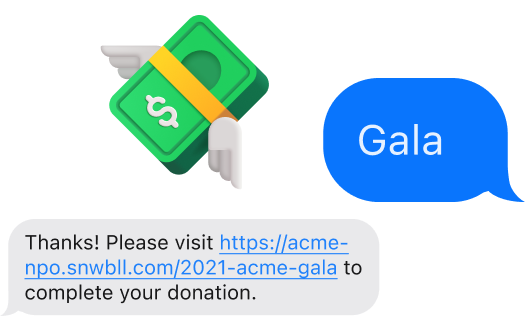
In case you’re new to the idea of text-to-give, the process is simple. A donor texts a predetermined keyword to your dedicated text-to-give phone number. Then, they automatically receive a link with instructions to complete a brief online form.
Here are the essential steps to launch a text-to-give campaign:
- Choose a text-to-give provider: Because there are many great platforms to consider, it’s a good idea to take the time to find the best match for your cause. You may want to compare different pricing plans, key features, and additional giving solutions before deciding. We recommend Snowball’s powerful text-to-give software for organizations of all shapes and sizes.
- Receive a dedicated mobile giving number: Once you’ve selected a text-to-give software provider, you’ll receive the mobile giving number that donors will text to contribute. Within seconds of sending a message, the donor will receive a link to follow instructions for completing a quick mobile-friendly donation form.
- Set a memorable keyword (or keywords): It’s best to use a provider that allows you to set as many keywords as you’d like. For example, you can use keywords like “GIVINGTUESDAY” for any donations directed toward that campaign. More generalized keywords like “DONATE” or “[Your nonprofit’s name]” can go toward your overall fundraising budget.
- Promote your campaign: Use social media, email, direct mail, and other communications tactics to spread the word about your text-to-give campaign. Donors know not only that you’re participating in Giving Tuesday and offering a mobile giving solution, but also how convenient it is to give via text message.
- Explain the process: For some donors, especially the less tech-savvy ones, the text-to-give process may be new and potentially overwhelming. To minimize these negative preconceptions, provide an easy-to-follow explanation walking through each step of the mobile giving process.
Even if your organization is already utilizing text-to-give, it’s important to ensure that your giving process is optimized for the most efficiency. Start promoting your text-to-give tool at least a week before Giving Tuesday, letting donors know that the option will be available on the big day and boosting excitement leading up to it.

3. Matching Gifts Drive
Matching gifts are a convenient way to multiply the money you raise through your Giving Tuesday fundraising ideas. However, many donors are unaware of the extent to which matching gifts can make a difference. That’s why 4 to 7 billion dollars in matching gifts go unaccounted for each year.
As a nonprofit leader, you probably have a basic understanding of corporate matching gifts, in which companies financially match donations made by employees to eligible organizations, usually at a 1:1 ratio to double the original donation.
While you should be promoting matching gifts year-round, it’s essential to amp up your marketing efforts during Giving Tuesday, so donors can take their gifts farther.
To do this, you can:
- Create a dedicated matching gift page on your website. Use this as a place where supporters can learn more about the guidelines for submitting a request and how to find their employer’s matching gift program.
- Embed a matching gift search tool on your donation forms. These tools allow donors to easily search for their companies’ matching gift programs. The information provided will let them know if their gifts qualify and suggest the next steps to request a match.
- Share information about matching gifts on social media. Use images and videos to grab your donors’ attention, and don’t forget to link to your matching gift page where donors can learn more.
Make sure to brush up on which matching gift programs your supporters are eligible for. That way, you can provide donors with specific information on their matching gift guidelines and encourage them to submit a request before it’s too late. 360MatchPro has a list of the top matching gift companies to help you get started.
4. Peer-to-Peer Fundraiser
While Giving Tuesday is a great opportunity to encourage existing donors to contribute more to your cause, you should also be drawing in new supporters. And what better way to acquire new donors than to launch a peer-to-peer fundraising campaign?
In a peer-to-peer fundraiser, your dedicated supporters become volunteer fundraisers themselves, soliciting donations from their networks on behalf of your organization.
These fundraisers will do the following to raise money:
- Create individual fundraising pages
- Set personal fundraising goals
- Ask their friends and family members to contribute
This type of fundraising is effective because people respond well to directly being asked to donate. In fact, 34% of individuals stated that they would have a higher likelihood of giving to charity if asked in front of others.
Keep in mind that your organization needs to participate in assisting fundraisers and welcoming new donors into your organization’s network.
To assist fundraisers, your organization should:
- Recruit fundraisers by looking for supporters that regularly contribute or attend fundraising events.
- Create email and social media templates and other resources to help your participants ask for donations.
- Host online or in-person workshops before the campaign launch date to teach fundraisers how to create their peer-to-peer fundraising page and share some tips and best practices.
- Send out thank-you letters to fundraisers and supporters, along with welcome packets and other resources for first-time donors.
Creating a peer-to-peer campaign for Giving Tuesday can help you discover new donors and provide unique opportunities for loyal donors to further their support for your organization.

5. Virtual Event
While fundraising events have largely been held in person in previous years, virtual solutions have recently become more common. Hosting events online provides convenience and ease for everyone involved. Donors can participate regardless of their physical location, meaning your nonprofit can engage a larger audience with fewer additional costs.
Virtual fundraising events that pair well with the excitement of Giving Tuesday include:
- Virtual walkathons or 5K runs
- Silent charity auctions
- Live-streamed galas
- Viewing parties
Whichever fundraising event you decide to host, include activities that encourage guests to make additional donations. For example, if you’re hosting a themed online auction, consider organizing a raffle to go along with your event. The incentive of an additional prize can motivate donors to give more.
Even if your virtual event is free to attend, it’s also in your nonprofit’s best interest to set up an event registration page where guests can RSVP and provide their contact information. This will provide your nonprofit with valuable data and help you plan for future Giving Tuesday events.
6. Charity Fundraising Gala
A gala is a dinner party that incorporates various fundraising tactics, like text-to-give and charity auctions. Galas can drive your mission forward by thanking key supporters, providing an engaging way to learn more about your organization, and using your event platform to update supporters on your progress.
When it comes to planning a charity gala, your nonprofit should:
- Pick an exciting theme for your event. The holiday season is a popular theme for galas, since people feel compelled to give during this time. With Giving Tuesday being so close to the holidays, it’s the perfect opportunity to maximize that giving spirit!
- Determine how you’ll accept donations. During the event, it’s important to raise additional funds for your organization, as your gala ticket price may not have been enough to reach your goal. Consider implementing donation kiosks, text-to-give, and mobile donation forms.
With these considerations in place, you’ll be able to host a successful charity gala. Be sure to promote your event well in advance and build up excitement for the big day through your marketing efforts.
7. Fundraising Walk-a-Thon
The classic charity walk-a-thon is an active and memorable event for supporters of all ages. With peer-to-peer fundraising strategies, registrants can encourage friends, relatives, and colleagues to sponsor them as they walk or jog a certain number of laps around your course.
It’s commonly believed that hosting a walk-a-thon can require a lot of planning and money up front. However, if you have the right steps and tools, your event can be surprisingly simple and cheap to host.
Whether your event is virtual or in-person, you’ll be able to run a successful and engaging event for your supporters either leading up to or on Giving Tuesday.

8. Branded Merchandise Sales
Selling branded merchandise is a great way to help your organization boost funds on Giving Tuesday. In fact, studies show that donors are more likely to give if it means receiving an item in return. Plus, having a t-shirt or mug with your nonprofit’s logo means that your supporters are actively promoting your mission when they use that item.
Here’s how it works:
- Choose a fundraising platform. There are plenty of options available, from crowdfunding websites that offer merchandise as giving incentives to fundraisers with dedicated product fundraising platforms that allow you to sell merchandise directly to donors. The important thing is to find a vendor that can print and distribute your products for you, so you can focus on promoting your campaign and building relationships with supporters.
- Design your merchandise. Your merchandise design is completely up to you, but you should brand the items with your nonprofit’s logo and colors to represent your cause. In other words, when people see your merchandise, they should have a decent idea of what your nonprofit’s mission is.
- Set your prices. Determine a price for your merchandise that can help you reach your fundraising goals. Keep in mind that most sites keep a percentage of the funds raised to cover printing and distribution costs, so you’ll need to take those fees into account when setting prices.
- Promote your merchandise to the community. Share your online sales page or product store with donors via email and social media and link to it on your website. Encourage your supporters to make a purchase on this platform, and reiterate that proceeds go towards supporting your mission.
T-shirts are a favorite across organizations. However, the items you sell can be adjusted to your particular audience.
9. 50/50 Raffle
In this simple raffle fundraiser, you’ll raise a significant amount of money for your mission through a hands-on game. To host a 50/50 raffle, individuals purchase tickets for the chance to win an undefined sum of money. When a ticket is sold, that money goes towards the jackpot.
At the conclusion of the raffle, the money is totaled and a ticket is chosen at random.
The winner with the matching ticket receives half the sum of money, while your organization gets the remaining half.
This is a great fundraiser to host in tandem with another charity event, such as a festival, gala, charity concert, and any other Giving Tuesday fundraisers that you have!
10. Virtual Pledge Campaign
In a virtual pledge campaign, the pledges earned by your donors represent the amount of contributions that you will receive in the future. Your organization can host this as a 24-hour campaign on Giving Tuesday, or run it for a few days leading up to the big event.
To launch a successful pledge campaign, be sure to:
- Set a fundraising goal.
- Announce your mission and explain why donors should contribute pledges.
- Track progress with gamification features like fundraising thermometers that encourage contributions.
Then, all you need to do is watch the pledges roll in as your supporters advocate for your organization and cause!

11. Charity Auction
Charity auctions are powerful fundraising campaigns that have gained popularity in recent years. Due to social distancing guidelines and the overall COVID-19 pandemic, many fundraising auctions and other events have been moved to the online space.
That being said, an online auction is a great way to engage your supporters and raise money for your cause on Giving Tuesday.
Follow these steps to plan and pull off a successful virtual auction:
- Procure auction items. Collecting eye-catching items is one of the most important parts of the planning process. Put together a procurement team of volunteers and staff members who will bring in auction items for your event by asking for in-kind donations from family, friends, and local businesses.
- Decide on the type of auction. Choose whether to host a live or silent auction. While a live virtual auction has significant live-streaming capabilities, a silent auction depends on having the right online and mobile bidding tools.
- Invite supporters to your upcoming event. Promote the event through social media and other digital marketing channels while also sending personalized invitations to previous supporters. Encourage those who plan on attending to register and/or purchase a ticket online beforehand.
- Release your online catalog and open it for bidding. While the main event should take place on Giving Tuesday itself, consider opening your catalog early for attendees to get a sneak peek at the items they could win. This is a great way to raise the excitement surrounding your auction, which can lead to increased revenue as a result.
- Collect payments and send out items. After your event, announce each winner, notify individuals, and collect payments equal to the highest bids. Finally, you’ll have to send items to the winners. Effectively communicate your shipping plans to guests so they’ll have an idea of what to expect and how soon they might receive their prizes.
Much like merchandise sales, auctions are effective fundraisers, because donors get to walk away with something for themselves while supporting a good cause.
12. E-Card Campaign
E-cards are digital cards branded to your organization that are typically sent around the holidays, but they’re also perfect for raising Giving Tuesday awareness. Supporters can purchase a card to email to their friends and family, spreading information about your mission and encouraging others to contribute with a card purchase!
Make sure your e-card service allows donors to personalize their messages to recipients—no one wants to receive a generic “Dear friend” card for the holidays. Once you have your e-card platform established, embed a link to an e-card form on your website and promote the campaign throughout your social media and email marketing channels.

13. Social Media Campaign
Social media is the driving force behind Giving Tuesday. If you primarily fundraise online, you’ll need to post compelling content to spread the word about your fundraiser and encourage donations.
Here are some ways to supplement your social media strategy:
- Ensure each piece of content is native to the platform you’re posting on. For example, a long-form Facebook post cannot be replicated as a 280-character tweet.
- Create a Facebook fundraiser to attract donors who follow your page.
- Make a hashtag for your specific organization on Giving Tuesday and use it on all posts regarding your campaign. For example, #[Your Nonprofit’s Name]GivingTuesday22.
- Change your accounts’ profile pictures to one that includes the #GivingTuesday logo.
- Shout out donors and volunteers to raise morale before Giving Tuesday.
- Encourage shares of your Giving Tuesday content by offering small giveaway incentives.
- Consider hosting a live-streamed session to answer any questions about your campaign.
No matter what content you post, your profile and captions should include a link to your campaign or donation page. Start planning your social media calendar early to build anticipation.
14. Donation Wish List
When requesting donations for a cause, consider that some supporters might be unable or unwilling to provide financial support but would consider non-monetary donations instead. That’s where donation wish lists come in handy, both for Giving Tuesday fundraisers and otherwise.
Here are two easy steps to get started with collecting in-kind donations:
- Accept physical donations. If your organization has a large network of local support, consider accepting donations of goods in-person. For example, you could encourage supporters to drop off food, clothing, or supplies at your nonprofit office. You could even partner with a local business or restaurant to collect physical donations on your behalf in a dedicated drop-off area.
- Provide an online wishlist. Start an online wishlist for supporters who want to get involved but might be outside your geographic location or otherwise unable to bring physical items to donate. Popular online retail sites like Amazon allow individuals and organizations to build online registries to share with supporters. Then, individuals can browse your list and purchase items to be sent directly to your organization.
Donation wish lists are popular with donors because it’s clear how their contribution will be used. By reducing the mystery surrounding how nonprofits use financial contributions, cautious donors can help out in a way that best suits them.
15. Give-it-Up Challenge
This fundraiser is perfect for the days and weeks leading up to Giving Tuesday. A give-it-up campaign challenges supporters to give up something they enjoy (but don’t require) for an amount of time while they raise money for your cause. The items supporters typically give up include:
- Screen time
- Netflix
- Video games
- Sweets
- Alcohol
- Shopping
- Meat or other animal products
- Coffee
Then, they give the money that they would have spent on these items over a specified time period to your fundraising campaign instead.
Your challenge will be even more successful if you promote it on social media. That way, your supporters can see what others are giving up and feel inspired to give something up themselves. Make sure to set a time period for your campaign so your supporters know how long to fundraise and when to resume their favorite activities.
16. Recurring Gifts Drive
Recurring donations provide your organization with a stable, predictable source of revenue. When you run a recurring gifts drive on Giving Tuesday, you’ll simply provide the option to make a repeat donation on a regular basis throughout the year.
Often, the reason donors don’t opt for recurring donations is that they aren’t aware of the opportunity. A recurring donation drive focuses on spreading awareness about the campaign so that people feel compelled to take action.
To accomplish this, prioritize recurring gifts in your Giving Tuesday marketing materials and offer tiered contribution amounts on your donation form, so supporters can easily select the amounts they wish to continually give.
17. Email Campaign

To get started, let’s walk through the main steps involved in hosting an email fundraising campaign:
- Craft intriguing email subject lines. A subject line is the first impression you make on a potential donor. Include a sense of urgency or curiosity to encourage supporters to click through and read the rest of your message.
- Write the body of your email text. Provide a brief description of your organization and your mission. Share what you’re doing for Giving Tuesday and how the recipient can get involved.
- Use software to customize messages. Address each recipient by name or take it a step further by summarizing a donor’s previous giving history with your organization. Either way, personalizing your emails leads to higher click-through rates (CTR) and conversion rates (CR).
- End with a clear call to action. Once the recipient has read through your email, it’s important that they understand what the intended next step is. For a Giving Tuesday campaign, include an eye-catching call-to-action that links to your online donation page.
Email is a great way to connect with donors during any fundraiser. Because of the rising popularity of Giving Tuesday, it may take a little extra effort to make your messages stand out in a supporter’s inbox. But, when done correctly, the ROI will be well worth it.
18. Crowdfunding
Crowdfunding is a type of mobile fundraiser that relies on a wide variety of donors making small to midsize gifts on a specific platform. No matter the size of the donation, the combination of gifts adds up quickly. This is an effective, low-pressure way for people to contribute to your Giving Tuesday campaign on their own terms, and to do so anonymously if they choose.
Your crowdfunding campaign can be shared effectively through social media platforms such as Facebook, Instagram, and Twitter. Encourage your supporters to share a single, centralized donation page you’ve created for Giving Tuesday to their own networks to promote involvement.
19. Viral Video Campaign
Most nonprofits remember the viral ALS Ice Bucket Challenge that overtook social media and raised millions of dollars for a good cause. Why not host your own challenge for your Giving Tuesday initiatives?
To get started, a viral video contest involves some sort of outrageous or humorous stunt performed on camera— the participant is the one creating the content. After taking part in the challenge, the participant posts their video to social media, makes a donation to your nonprofit, and tags one or two of their followers to form a chain reaction that raises awareness and funds for your cause.
20. Letter-Writing Campaign

Here are some tips for ensuring the most effective letter-writing campaign:
- Write each letter by hand. Handwritten notes show a higher level of interest and care than a mass appeal sent out to hundreds of recipients. It’s a personal touch that shows your nonprofit is dedicated enough to take the time to write and send each donor a letter.
- Sign every letter. While your notes can be written by anyone on your team (including volunteers), consider getting them signed by a key board member or executive director. Regardless of who signs your notes, the most important part is that it’s signed by a real person, rather than by your organization as a whole.
- Put thought into the design. You don’t want a letter scribbled down on a sheet of notebook paper. Instead, make sure it looks like you put time and effort into it. Choose nice stationery, write neatly, and incorporate your organization’s brand.
- Thank your donors. This may be an acknowledgment of a previous donation or even a consideration for the time they’ve taken to read your letter.
In addition to personalizing your fundraising letters, it’s essential that you make it easy to give. For the best results, include an easy-to-type link to your online donation page and provide a return envelope for cash or check donations.

Tips for Putting a Giving Tuesday Idea into Action
Giving Tuesday is a popular event for nonprofits everywhere, meaning it can take a significant amount of preparation to make your campaign stand out. Here are a few tried-and-true tips to get started with an effective fundraising plan:
- Have an online donation page in place. To maximize your online fundraising, it’s important to have a fully-optimized, informational, and user-friendly donation form. At the very least, your donation form should include your organization’s mission statement, suggested giving amounts, and fields for collecting a donor’s contact and payment information.
- Start promoting early. Don’t wait until the last minute to promote your Giving Tuesday campaign. Instead, start early in the year to effectively plan and market your fundraiser. Otherwise, you risk your campaign getting lost in all the digital clutter that occurs on Giving Tuesday.
- Set a fundraising goal. Because of Giving Tuesday’s rising popularity, you may want to set your fundraising goal a little higher than usual. If you’ve participated in prior years, consult your previous fundraising data to determine a good starting point. An example of an actionable goal might be: “To raise $10,000 in donations during our Giving Tuesday campaign by 11:59 p.m. on November 29, 2022.”
- Follow up after the celebration. After the global day of generosity has ended, thank your donors for their participation. Whether through a phone call, handwritten letter, or email, it’s important to convey the impact of their gifts and encourage continued support. That’s why a follow-up email like this can be useful: “Thanks to your gift of $500 to our Giving Tuesday fundraiser, 10 families were provided with toys to make the holidays special.”
The key takeaway from planning your Giving Tuesday campaign is that it’s not something that your team should leave until the last minute. The more you have ready to go ahead of time, the better equipped your organization will be as the big day approaches.
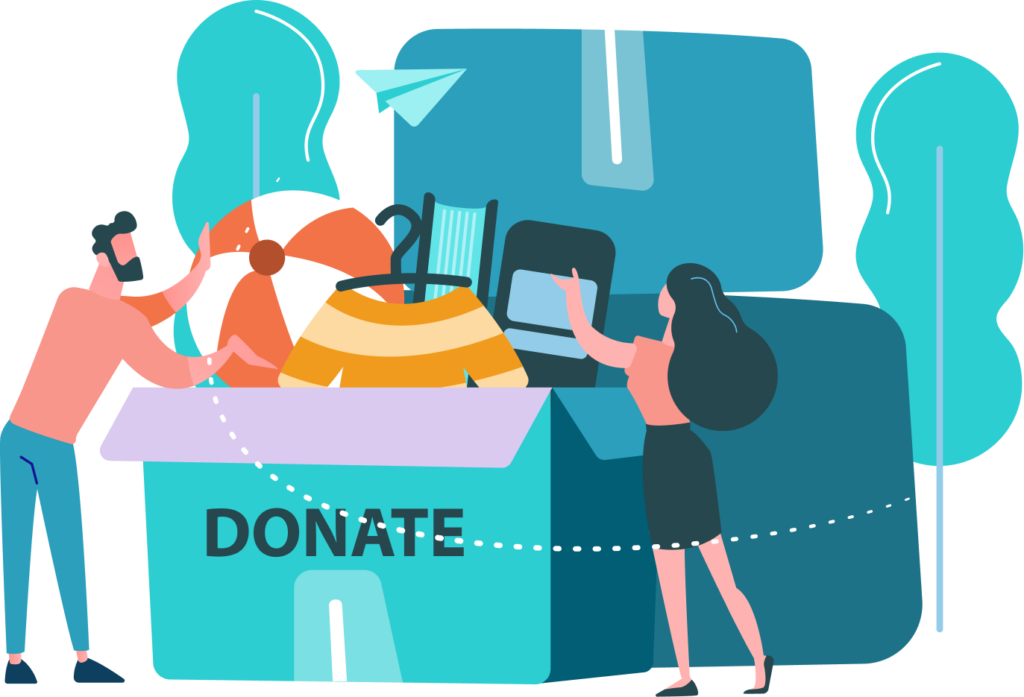
Examples of Giving Tuesday Campaigns That Inspire
Sometimes the best way to prepare for a fundraiser is to evaluate the campaigns that have achieved success in previous years. Let’s take a look at three effective Giving Tuesday campaigns—and why they were so powerful.
Best Giving Tuesday Campaign for Donation Matching: Michael J. Fox Foundation
The Michael J. Fox Foundation is known for its powerful fundraising skills and Giving Tuesday participation. To raise money for Parkinson’s research, the team behind this foundation decided to boost donations by offering a dollar-for-dollar donation match up to $2 million for their 2020 Giving Tuesday campaign, following their same initiative in 2019.
What you can learn from this campaign:
Donation matches motivate supporters to get involved. Without reaching back into their own pocket, they know their donation is making twice as much impact on the cause.
If your organization is unable to provide the match yourself, it’s a great opportunity to encourage donors to seek matching gifts from their own employers through eligible corporate giving programs.
Best Giving Tuesday Campaign for Peer-to-Peer Fundraising: Leukemia & Lymphoma Society
The Leukemia & Lymphoma Society raises money for cancer research and helps support patients and their families. For their 2019 and 2020 Giving Tuesday approach, they encouraged individual supporters to take on a larger role in the campaign by becoming fundraisers themselves. Many took to social media to share their stories and what the Leukemia & Lymphoma Society means to them.
What you can learn from this campaign:
A peer-to-peer fundraising campaign like this one is a great way to increase your reach and connect with new supporters. When an existing donor takes the time and effort to promote your organization, especially on a big day like Giving Tuesday, their own social networks are significantly more likely to respond and donate than if you had asked them yourself.
Best Giving Tuesday Campaign for Social Media Sharing: The Trevor Project
The Trevor Project is a nonprofit organization working to prevent suicide among LGBTQ+ youth in America. For their 2020 Giving Tuesday campaign, the team behind the Trevor Project took to Facebook to host an effective fundraiser and bring in thousands of dollars for their cause.
What you can learn from this campaign:
Thanks to popular social media platforms, users can donate quickly and easily, as well as sharing the campaign with their own friends and followers. The Trevor Project’s fundraiser ended up bringing in more than 110% of its original fundraising goal!
Learning from these Giving Tuesday examples can help you choose elements that you’d like to emulate in your own campaign.
If you can’t decide on just one Giving Tuesday idea, a multi-channel approach might be the solution. Having multiple touchpoints, such as running a text-to-give campaign alongside a matching gift drive, can help boost engagement, reach wider audiences, and drive more fundraising dollars.
For more fundraising inspiration, check out these additional resources:
- 99+ Awesome Church Fundraising Ideas for Your Congregation. Are you looking to raise money for your church’s youth group or mission trip on Giving Tuesday? Check out these church fundraising ideas for your next fundraiser!
- School Fundraising Ideas: 75+ Top Fundraisers (& Pro Tips). Engage your entire school community on Giving Tuesday by checking out our 75+ top ideas and tips.
- Top 5 Mobile Fundraising Campaigns & How to Create Your Own. Follow this guide to learn how successful a mobile fundraising campaign can be when you apply the right principles and review top examples for inspiration!
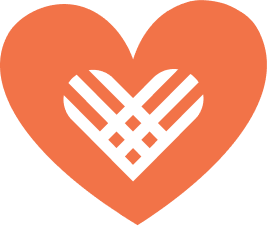
Maximize your fundraising success with Snowball. Our comprehensive software will help you raise more on Giving Tuesday.





